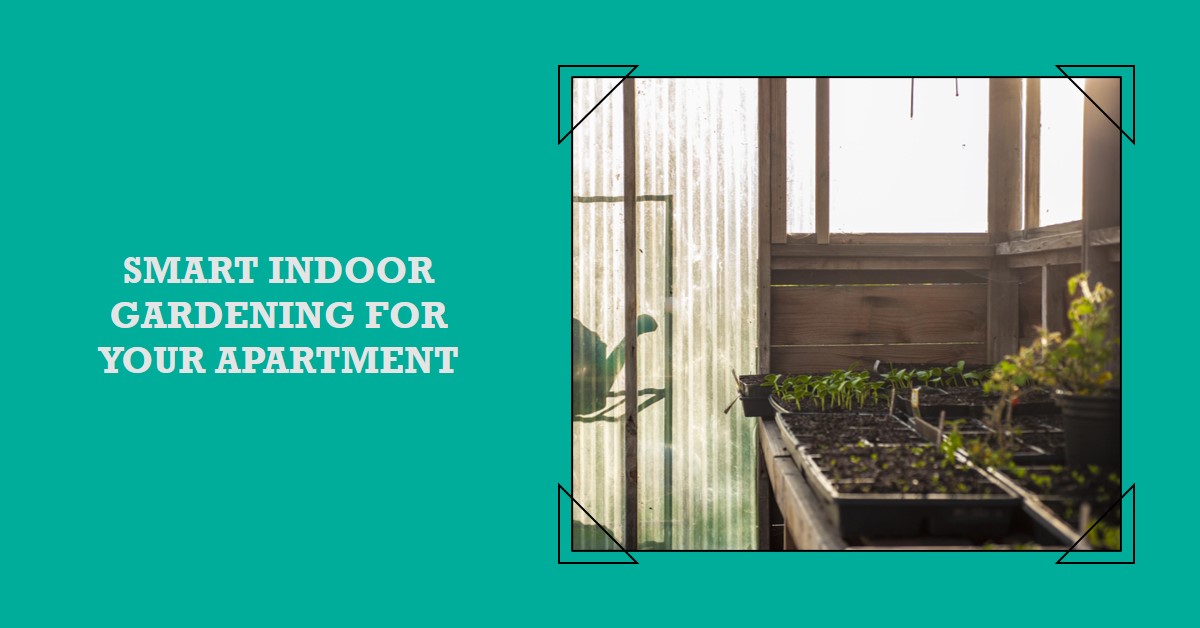Indoor gardening has taken a leap forward with the advent of smart automation technologies. With limited outdoor spaces and increasing awareness around sustainable living, many people are turning to smart automated indoor gardening to grow their own herbs, vegetables, fruits, and flowers. But what exactly is this new trend all about? Let’s explore the ins and outs of smart indoor gardens and understand why they are becoming so popular among city dwellers and green thumbs alike.

Table of Contents
- The Rise of Smart Automated Indoor Gardening
- Key Components of Smart Indoor Gardening Systems
- Benefits of Smart Indoor Gardening
- Getting Started with Smart Automated Indoor Gardening
- Conclusion: Bringing Nature Indoors with Smart Gardening
1. The Rise of Smart Automated Indoor Gardening:
Smart indoor gardening marks a significant shift towards tech-driven horticulture solutions designed to simplify and enhance the process of growing plants indoors. Here are three reasons behind its rapid rise:
- Urbanization: More people live in cities now than ever before. Limited open spaces often mean giving up on having our own little patch of greenery. Vertical gardens and modular systems offer a perfect alternative, allowing us to enjoy the benefits of gardening despite space constraints.
- Sustainability: Growing your food reduces carbon footprint and packaging waste. Plus, knowing where your food comes from adds peace of mind. Modern smart gardens help conserve water and energy while providing consistently healthier yields compared to conventional farming techniques.
- Technological Advancements: Innovations such as IoT devices, LED lights, AI-powered apps, and remote control features transform once manual tasks into automatic processes, saving time and effort.
2. Key Components of Smart Indoor Gardening Systems:
A typical smart indoor garden consists of several core elements working together seamlessly to ensure optimal plant growth conditions. These consist of:
- Automated Lighting: Energy-efficient LED bulbs mimic sunlight patterns to cater to different stages of photosynthesis depending upon the type of crop being grown.
- Smart Irrigation Systems: Precision timers regulate water distribution based on individual plant requirements, preventing overwatering or under-watering scenarios.
- Environmental Sensors: Monitor temperature, humidity, light intensity, CO2 levels, pH balance, and other factors affecting growth rate, adapting settings accordingly.
- Nutrient Delivery Systems: Dissolve soluble fertilizers in water tanks and automatically deliver them through drip emitters attached to roots.
- Smart Control Interfaces: User-friendly mobile apps allow real-time adjustment of parameters, alert users regarding maintenance needs, track progress, and provide troubleshooting tips.
3. Benefits of Smart Indoor Gardening:
Smart indoor gardening offers numerous advantages over traditional methods. Some compelling reasons to switch include:
- Convenience: Everything from sowing seeds to harvesting can occur within arm’s reach. No bending down, digging soil, or worrying about unpredictable weather.
- Efficiency: Advanced algorithms calculate ideal growing conditions tailored to particular species, yielding faster results with minimal resource wastage.
- Year-Round Growing Capabilities: Regardless of season, location, or climate, nurturing crops becomes possible throughout the entire year.
- Space Optimization: Compact designs fit snugly inside apartments, offices, kitchen corners, etc., maximizing available square footage.
- Customization Options: Experiment with various types of plants, colors, sizes, shapes, textures, flavors, aromas, and arrangements according to personal preference.
4. Getting Started with Smart Automated Indoor Gardening:
Starting your smart indoor garden adventure requires careful planning and execution. Follow these simple steps to kickstart your journey:
- Choose the Right System: Assess your budget, space availability, desired output, preferred aesthetics, and technical proficiency level before committing to any product.
- Select Suitable Plants: Opt for low-maintenance varieties suited for enclosed environments, e.g., leafy greens, microgreens, herbs, cherry tomatoes, strawberries, peppers, mushrooms, etc.
- Set Up Your Garden: Place the unit near natural light sources yet away from drafts; connect it to power outlets, WiFi networks, and compatible mobile devices.
- Program Parameters: Adjust settings relevant to selected crops, including watering schedules, lighting cycles, nutrient dosages, and ambient temperatures.
- Monitor & Maintain: Regularly observe plant development, address issues promptly via app suggestions, replace consumables periodically, and clean filters regularly.
5. Conclusion: Bringing Nature Indoors with Smart Gardening:
In summary, smart automated indoor gardening represents a fantastic opportunity to reconnect with nature amidst hectic lifestyles. Whether seeking improved air quality, enhanced nutrition, reduced ecological impact, or merely therapeutic pastimes, embracing this cutting-edge technique promises myriad rewards. So go ahead, dive in, and discover the magic of self-sustaining ecosystems blossoming right inside your home!
Frequently Asked Questions
F1. How much does a smart indoor garden cost?
Answer: Prices range between $100-$2000+ depending on size, complexity, brand reputation, and additional features included.
F2. Can I grow anything in a smart garden?
Answer: Most units support a wide variety of plants, though some specialized models may only accommodate select species. Always refer to manufacturer guidelines for compatibility details.
F3. Do smart gardens require constant supervision?
Answer: Not necessarily. Once programmed correctly, they mostly run independently, requiring occasional checks for potential problems.
F4. Are there any drawbacks associated with smart gardens?
Answer: While relatively few, common concerns involve higher initial costs, reliance on electricity, plastic component usage, and limitations in controlling certain aspects manually.
F5. What happens if something goes wrong with my smart garden setup?
Answer: Contact customer support for assistance, consult user manuals or online resources, join community forums, or seek professional repair services specializing in smart gardening equipment.
